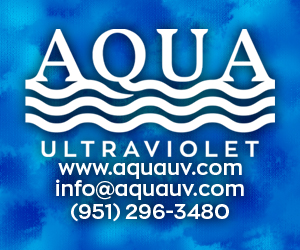 It’s a basic principle: Cash flows into your pond business when you sell a job. Cash flows out when you pay the costs of the job and your overhead expenses.
It’s a basic principle: Cash flows into your pond business when you sell a job. Cash flows out when you pay the costs of the job and your overhead expenses.
If you sell jobs for less than what it costs to build the job and pay your overhead expenses, you’ll get behind. You won’t have enough cash to flow.
Pricing your jobs correctly is the first step to positive cash flow in a pond construction business. It’s easy to do if you know the math. Determine your markup: the markup you need based on your overhead expenses and your profit needs. Apply that markup to your estimated job costs, and use it every time. Now you can rest easy knowing that if you make the sales and if you build your jobs the way you have estimated them, you will always have enough to pay your bills and make a minimum profit on that job.
I recently read a post from a contractor who said he would cut his price up to 10 percent to get the job. If he was pricing jobs to make an 8 percent net profit, he’s now given away all of his profit.
I’ve championed the cause of 8 percent net profit for many years. I know from long experience that pond construction companies who consistently price their work to obtain an 8 percent net profit are always able to pay their bills on time. They can pay their suppliers, their subcontractors, their employees, their taxes and themselves. When the bills are paid on time, they are free to focus their time and effort on building a profitable pond building business instead of worrying how to make payroll next Friday. And when a problem happens on a job, they have a cushion to tap if needed.
During the last few years, we have seen more and more pond building contractors cut their prices to obtain work. That is foolish mischief at its worst. Think about this: where will the money come from to pay your bills after you cut the sales price of a given job?I recently read a post from a contractor who said he would cut his price up to 10 percent to get the job. If he was pricing jobs to make an 8 percent net profit, he’s now given away all of his profit — and 2 percent more that was needed to pay overhead expenses. He will be taking money out of his own pocket to build that job.
“I’ll make it up on the next one,” you say. Right. I have yet to meet the contractor who will cut his price to get a job and then increase the sales price on subsequent jobs to make up for the loss on the first job. It’s a great theory, but it doesn’t happen. Why do you think it will be easier to get a higher price on the next job to make up for the low price on this one?’
>> Related Content | How to Take the Sting Out of Cancelled Contracts
Don’t do it. Recognize that when you cut your price, you are putting your company at risk. Spend time polishing your sales presentation instead of worrying about your sales price, so you won’t have to cut your prices.
Calculate the markup your pond building business needs to apply to all job estimates, and use it without fail. Positive cash flow can only happen if there’s enough cash to flow



If he was pricing his jobs at 8% profit to begin with, he was an idiot and deserves to starve. And if he runs a pond company on a 2% overhead, he is clearly the most efficient contractor in the business.